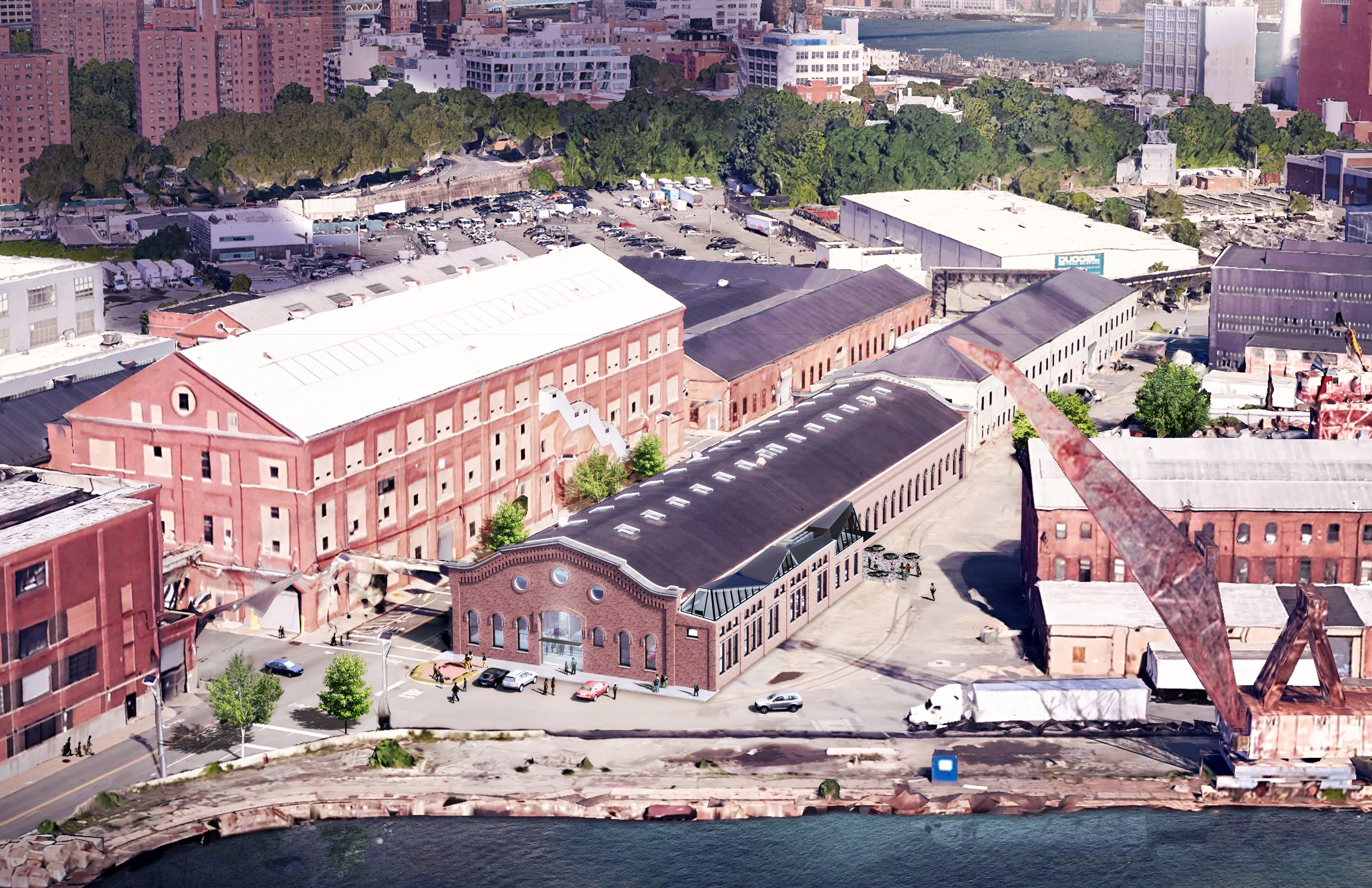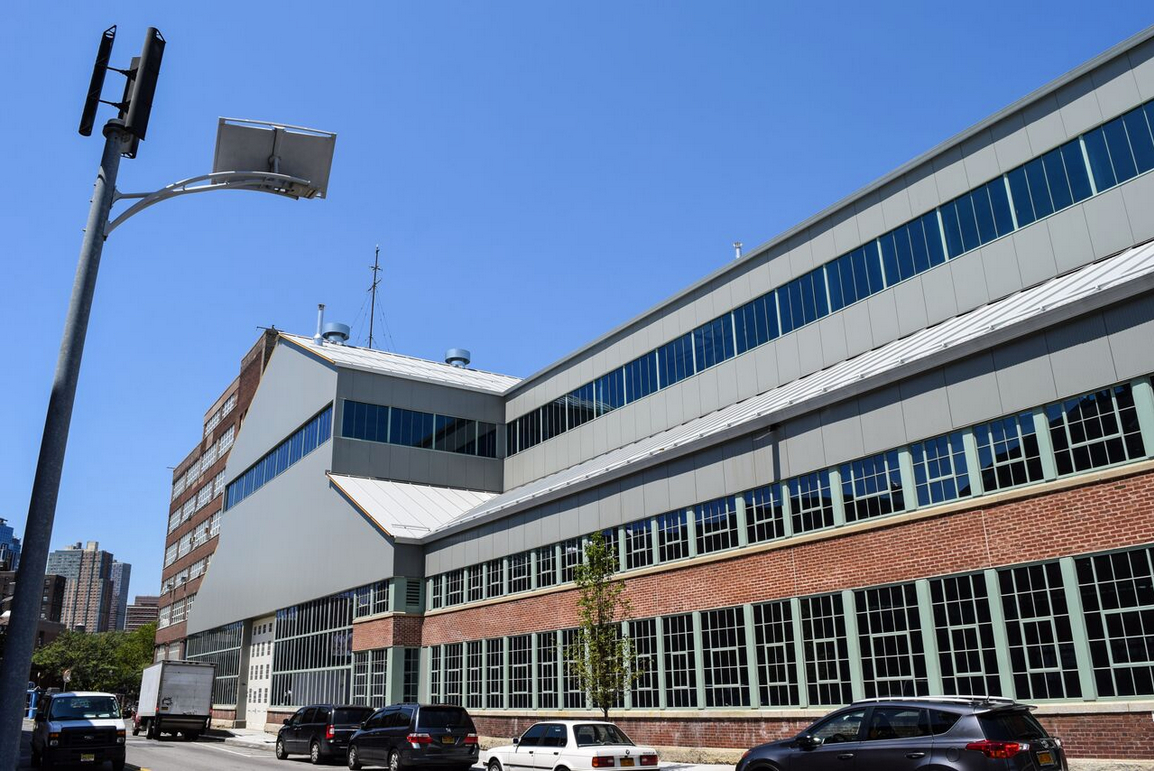Nanotronics seeks city approval for Navy Yard renovation
Community Board 2 to review plans for Building 20

This conceptual rendering shows a proposed design for the Brooklyn Navy Yard's Building 20, the building with the dark gray roof. Renderings by Rogers Partners Architects + Urban Designers
Tech manufacturer Nanotronics is expanding its presence at the Brooklyn Navy Yard by turning Civil War-era Building 20 into a modern factory.
“We’re building the foundation for the next industrial revolution,” Nanotronics’ Chief of Staff James Williams told the Brooklyn Eagle.
[Interested in learning more? Community Board 2 is hosting a meeting tonight at 6 p.m. at St. Francis College, where a committee will vote on the proposed design.]
